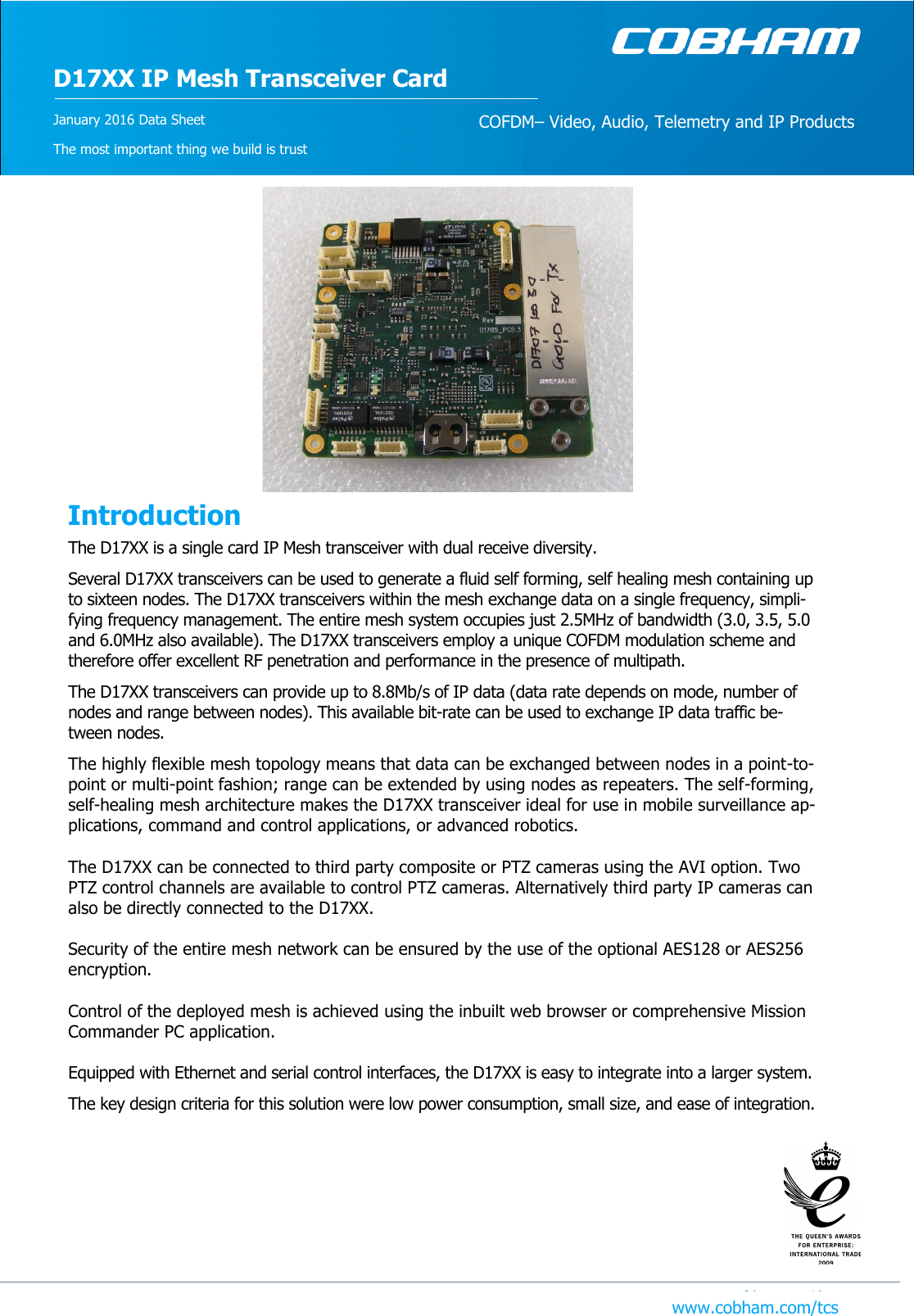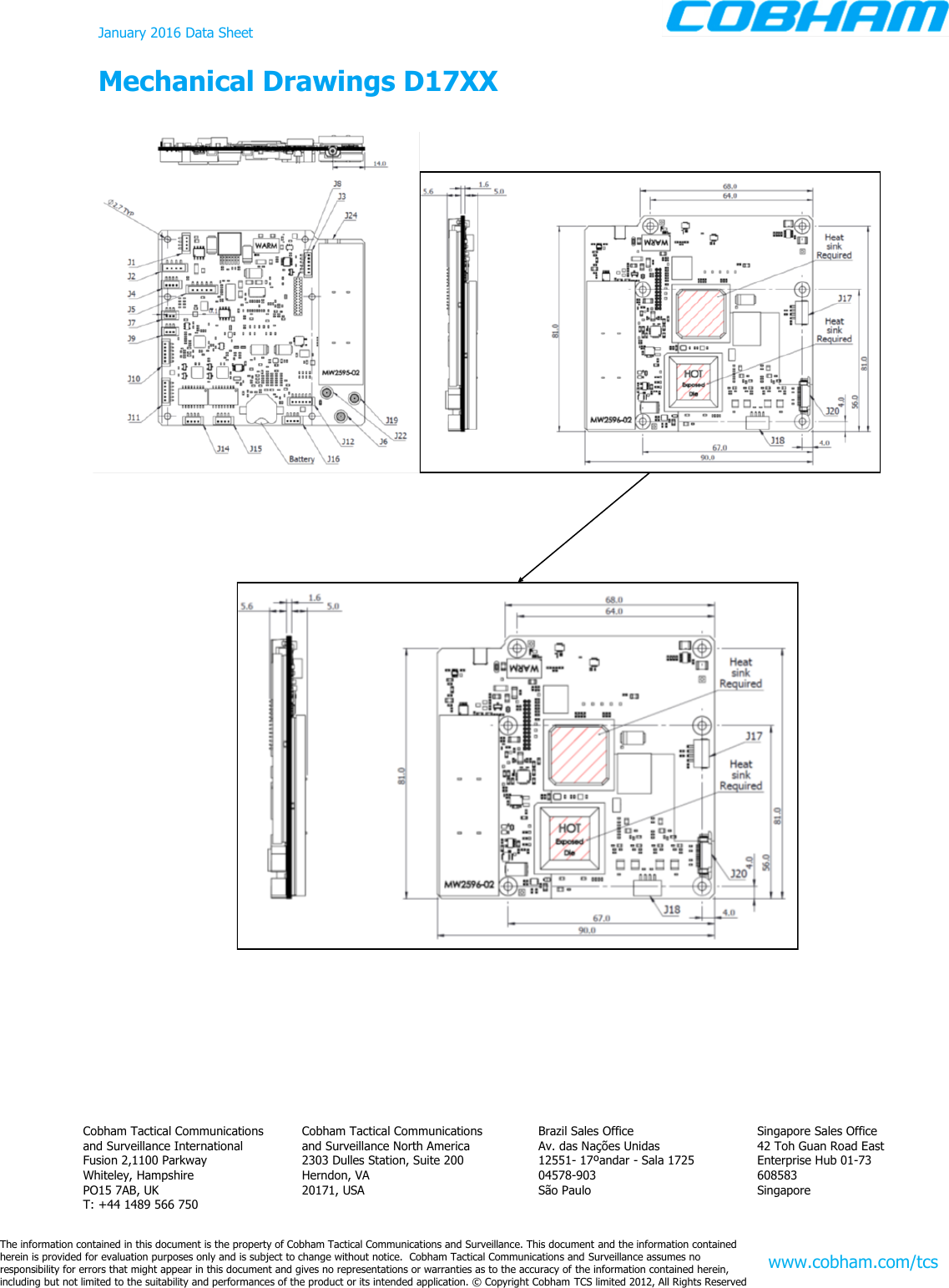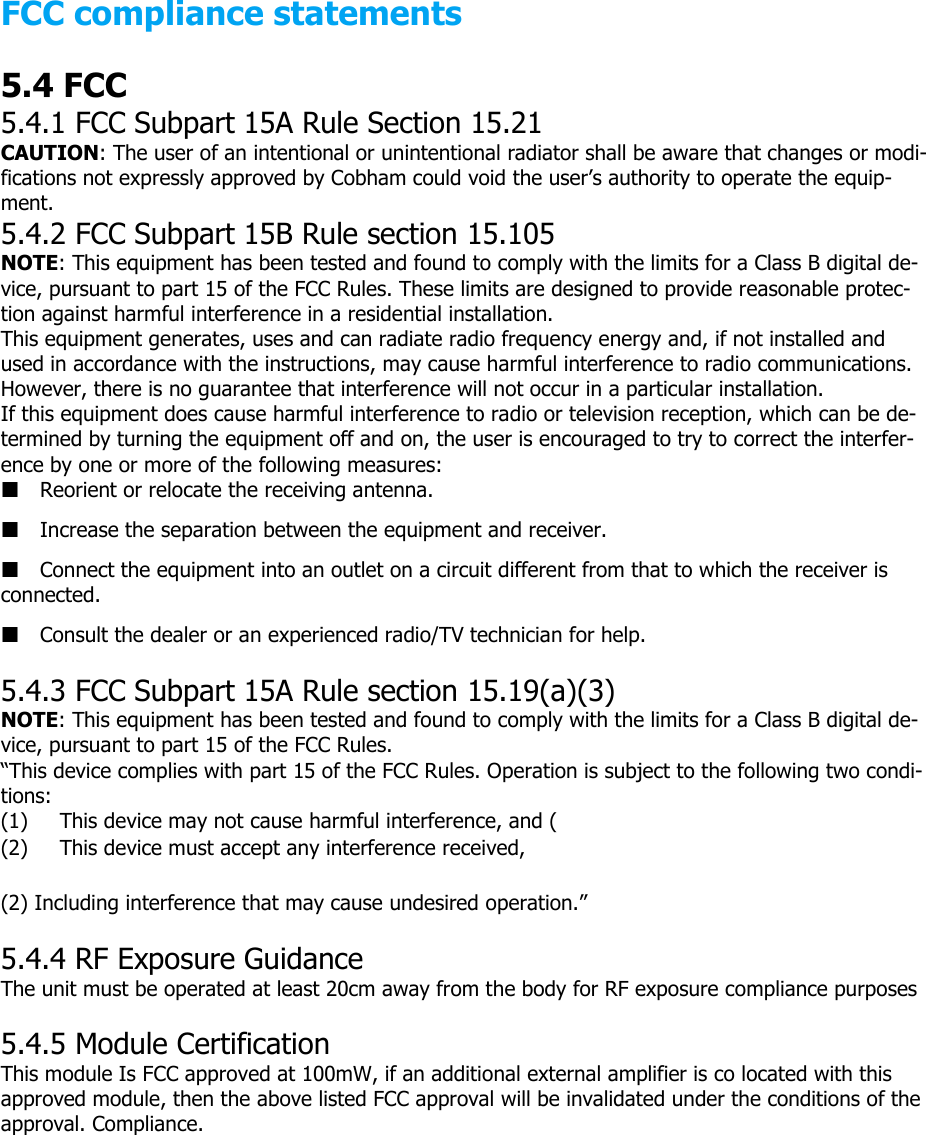Domo Tactical Communications NETNODEP4 Phase 4, Agile Mesh Netnode Module D1707 User Manual OEM INSTRUCTIONS D17XX V0 3
Cobham Surveillance Segensworth Phase 4, Agile Mesh Netnode Module D1707 OEM INSTRUCTIONS D17XX V0 3
Contents
- 1. D17XX OEM INTEGRATION DOC V0_1
- 2. OEM INSTRUCTIONS D17XX V0.3
OEM INSTRUCTIONS D17XX V0.3

![January 2016 Data Sheet Features www.cobham.com/tcs Single card solution, includes 2 receivers, 100mW power amplifier and T/R switching. Low power, typically 4W when meshed to another node at 100mW. [Power consumption is dependent on data rate, channel BW and number of nodes.] 2.5MHz / 3MHz / 3.5MHz / 5MHz and 6MHz operating bandwidth modes Two-way diversity Maximum Ratio Combining for fade and multipath elimination Internal AES 128 / 256bit encryption (optional) Twin IP interfaces Multiple Serial interfaces SMP RF connectors for reduced size and ease of connection Optional Encoder offering very low delay video operation for real time applications Interfaces for optional external amplifier up to 2W Talk-back Audio Micro SD card for 32GB storage via flexible circuit connector FCC approval for the D17XX as an OEM Module. Isometric View D17XX](https://usermanual.wiki/Domo-Tactical-Communications/NETNODEP4.OEM-INSTRUCTIONS-D17XX-V0-3/User-Guide-2940656-Page-2.png)
![January 2016 Data Sheet RF Tuning Step Size Output Power Bandwidth Mesh Capacity Modulation Carrier Modulation FEC Rate Receive Diversity Receive Sensitivity 125kHz step +20 to -10dBm, 0.25dB steps (100mW) 2.5, 3.0, 3.5, 5.0, 6.0 MHz Up to 8.8Mb/s COFDM 360 carrier modulation BPSK, QPSK or 16QAM (adaptive) FEC1/2, FEC2/3 (adaptive) Maximum Ratio Combining -98dBm (BW 2.5MHz / BPSK 1/2) IP Interface Ethernet electrical IP Address Alloc. Video & Audio stream-ing format 100BaseT Ethernet DHCP dynamic IP Addressing Multicast VLC compatible UDP & RTSP Support Open Audio comms channel Audio Comms channel Compression Interface Microphone level/headphone G726 32kbit audio Encryption Type AES128 or AES256 (both optional) GPS Dedicated GPS I/F RS232/RS485 Data Interface RS232/RS485 data 1K2 to 115K2 baud switchable, UDP & TCP routing protocol Control Local Control Remote control Bicolour LED indicates power and mesh status. Mission Commander PC App. Web browser control Specification www.cobham.com/tcs Frequency Selection D1700 D1702 D1703 D1705 D1707 D1710 D1713 D1715 200 – 300 MHz 300 – 470 MHz 450 – 600 MHz 1140 – 1500 MHz 1980 – 2550 MHz 3000 – 3700 MHz 4400 – 5000 MHz 5500 – 6000 MHz Interfaces Antenna 1 [Rx] Antenna 2 [Tx/Rx] Transmitter Port External PA input Power Ethernet 1 Ethernet 2 Control and Misc Camera (A/V) SMP J19 SMP J22 SMP J24 SMP J6 JST J2 JST J14 JST J15 JST J3 (RS485) JST J12 (RS232) Optional Card—D550](https://usermanual.wiki/Domo-Tactical-Communications/NETNODEP4.OEM-INSTRUCTIONS-D17XX-V0-3/User-Guide-2940656-Page-3.png)
![Physical Mass Dimensions 82g 90mm x 85mm Power DC Input Power Consumption 8-16V Typically 4W when meshed to a sin-gle node at 100mW Tx power. [Power consumption is dependent on data rate, channel BW and num-ber of nodes] A/V input (Separate Card Option) Video Input Video Format Video Encoding Quality Video bit-rate Resolution Frame Rate Audio Input Audio Sampling Freq. Audio encoding Audio bit-rate Composite or SDI (selectable) 525 or 625 (PAL or NTSC) MPEG4 Low/Medium/High (selectable) 2.4Mbit/s to 50kb/s (variable) 704, 576, 480 or 352 Self-selecting 30 to 2F/s Line level or Microphone level 48kHz MPEG audio layer 1 384 to 64kb/s Store and For-ward options Storage Format Record Options Files Download AV Clip Size Secure Digital (SD) Card interface—optional Continuous or Triggered From web browser interface (Milestone) 30 seconds Environment Temperature Range -10 to +50 °C January 2016 Data Sheet www.cobham.com/tcs](https://usermanual.wiki/Domo-Tactical-Communications/NETNODEP4.OEM-INSTRUCTIONS-D17XX-V0-3/User-Guide-2940656-Page-4.png)

